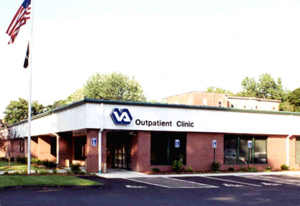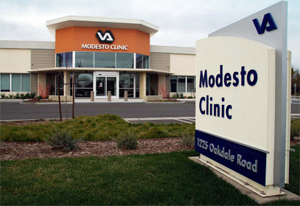Overview
Within This Page
For many years the health care system has experienced a continuing decline in the number of beds required for inpatients. As inpatient care is reduced, there is a corresponding trend toward increased outpatient health care. An outpatient clinic is less expensive to build and operate than a hospital. Space need not be devoted to "hotel functions" (the typical nursing units of hospitals), and the extensive dietetic and housekeeping areas that accompany them. Fire code requirements are considerably less demanding and mechanical and electrical systems can be simpler. Multiple shifts of staff are not required, since the building is usually closed at nights and on weekends, and housekeeping can take place after it is closed to patients and most staff, rather than while it is occupied.
By definition, all outpatient facilities are alike in having no overnight patients. Otherwise, they can range from simple physicians' offices that provide primary care, to large, independent "hospitals without beds." Outpatient surgical facilities are now a common facility type, as the majority of surgical procedures may not require overnight hospitalization. An increasing number of community-level outpatient clinics are satellites of larger medical centers or systems, and are thus part of a complex that can emphasize continuity of care.

Springfield Community-Based VA Outpatient Clinic, Springfield, MA
Photo Credit: U.S. Department of Veterans Affairs
Almost all hospitals already include some outpatient diagnostic and treatment spaces. Many outpatient construction projects are responses to hospitals' increased outpatient workloads. Existing outpatient facilities within hospitals are expanded, overhauled, and updated. Such a renovation can serve a number of important functions in addition to that of giving the hospital a new outpatient focus. It may create improved circulation patterns or it may replace obsolete clinical areas with state-of-the-art services for use by inpatients as well as outpatients. Light-filled lobbies can give a friendly new face to hospitals that had been dour and intimidating-a new image that is very valuable in today's competitive climate.
Building Attributes
Although outpatient facilities may vary greatly in size and in services offered, all should have certain common attributes:
Efficiency and Cost-Effectiveness
The layout of the clinic should:
- Promote staff efficiency by minimizing distance of necessary travel between frequently used spaces
- Make efficient use of space by locating support spaces so that they may be shared by adjacent functional areas, and by making prudent use of multi-purpose spaces
- Include all needed spaces, but no redundant ones. This requires careful pre-design programming.
- Group or combine functional areas with similar system requirements
Flexibility and Expandability
As medical needs, modes of treatment, and workload will continue to change, outpatient facilities should:
- Follow modular concepts of space planning and layout
- Use established standard room sizes and plans as much as possible, rather than tight and highly specific ones
- Be served by modular, easily accessed, and easily modified mechanical and electrical systems
- Where size and program allow, be designed on a modular system basis
- Be open-ended, with well planned directions for future expansion
Cleanliness and Sanitation
Both sanitation and the appearance of it are important goals for outpatient facilities. They are promoted by:
- Appropriate, durable finishes for each functional space. Antimicrobial surfaces might be considered for appropriate locations
- Proper detailing of such features as doorframes, casework, and finish transitions to avoid dirt-catching and hard-to-clean crevices and joints
- Adequate and appropriately located housekeeping spaces
- Incorporating O&M practices that stress indoor environmental quality (IEQ)

Modesto Community-Based VA Outpatient Clinic, Modesto, CA—part of the VA Palo Alto Health Care System.
Photo Credit: U.S. Department of Veterans Affairs
Easy Visibility
To encourage its use, the facility should be:
- Easy to find, clearly visible from the approach road, with good directional signage from nearby major roads
- Easy to recognize, with a welcoming image and clear, appropriately located directional signage
- Easy to enter, with visible, well-identified entrance, and a clear route from parking
Accessibility
All areas, both inside and out, should:
- Comply with the minimum requirements of the Americans with Disability Act (ADA) and, if federally funded or owned, the GSA's ABA Accessibility Standards
- Be easy to use by the many patients with temporary or permanent handicaps
Therapeutic Environment
Although the needs of outpatients are less intense than those of hospital inpatients, an individual's visit may still be very stressful. Every effort should be made to make the outpatient visit as unthreatening and comfortable as possible, and to make the patient's experience more like going to a doctor's office than to a hospital. This can be accomplished by:
- Using familiar and non-institutional materials with cheerful and varied colors and textures
- Opening up an inwardly directed environment with views of landscaped courtyards and other outdoor spaces, particularly from waiting spaces. Nature scenes may be provided if outdoor view is unavailable.
- Using cheerful and varied colors and textures, keeping in mind that some colors are inappropriate and can interfere with provider assessments of patient's pallor and skin tones, disorient older or impaired patients, or agitate patients, staff, and particularly some psychiatric patients. See also VA Interior Design Manual.
- Admitting ample natural light wherever feasible and using color-corrected lighting in interior spaces, which closely approximates natural daylight
- Promoting patient dignity and privacy by visual screening within exam rooms and sound insulation between exam and consultation rooms and other spaces
- Encouraging patient independence by a patient-orientated layout, with clear and uncomplicated patient routes, visual cues, and clear signage
- Providing quiet areas for meditation/spiritual renewal, such as, in larger facilities, quiet rooms, and meditation gardens
- Ensuring grades are flat enough to allow easy movement, and sidewalks and corridors are wide enough for two wheelchairs to pass easily
- Ensuring entrance areas are designed to accommodate patients with slower adaptation rates to dark and light; marking glass walls and doors to make their presence obvious
Aesthetics
Aesthetics is closely related to creating a therapeutic environment (homelike, attractive). Also, aesthetics is important to the clinic's public image and is thus an important marketing tool, both for patients and staff. Aesthetic considerations include:
- Increased use of natural light, natural materials, and textures
- Use of artwork
- Attention to detail, proportions, color, and scale
- Bright, open, generously scaled in public spaces
- Homelike and intimate scale in patient rooms and offices
- Signage that promotes optimal way-finding, satisfies the orientation needs of the first-time patient, allows easy navigation, and provides highly visible reference points immediately adjacent to each major entrance
- Use mechanical door openers to assist in entering and leaving the facility
Security and Safety
In addition to general safety concerns of all buildings, clinics have several particular security concerns:
- Protection of clinic property and assets, including drugs
- Protection of patients, including incapacitated patients and staff
- Violent or unstable patients need to be controlled safely
- Large, prominent, publicly-owned clinics may be potential terrorism targets
Sustainability
Clinics are public buildings that have an impact on the environment and economy of the surrounding community. They are major users of energy and water and produce large amounts of waste. Because clinics place demands on community resources they are natural candidates for sustainable design.
Section 1.2 of VA's HVAC Design Manual is a good example of health care facility energy conservation standards that meet Energy Policy Act of 2005 (EPACT) and Executive Order 13693 requirements. The Energy Independence and Security Act of 2007 (EISA) provides additional requirements for energy conservation. Also see USGBC's Leadership in Energy and Environmental Design (LEED) for Healthcare.
Related Issues
The HIPAA (Health Insurance Portability and Accessibility Act of 1996) regulations address security and privacy of "protected health information" (PHI). These regulations put emphasis on acoustic and visual privacy, and may affect location and layout of workstations that handle medical records and other patient information, paper and electronic, as well as patient accommodations."
Emerging Issues
- A continuing proliferation of specialized, one-service facilities: dialysis centers, cancer centers, surgery centers, heart centers, etc.
- A growing interest in more holistic, patient-centered treatment, which might include, among other things, the provision of a mini-medical/health care library and computer terminals, so patients can research their own conditions and treatments.
Relevant Codes and Standards
Code requirements for medical office buildings are much less restrictive than those for hospitals. Local building codes will largely govern. However, federal facilities on federal property generally need not follow local and state codes, but follow federal regulations.
Outpatient facilities operated under a hospital's license or requiring separate state licensing and accreditation will be governed by additional regulation. Many states base licensing on the FGI Guidelines for Design and Construction of Health Care Facilities as a resource, and thus that volume often has regulatory status.
State and local building codes are based on the model ICC IBC International Building Code. Federal agencies are usually in compliance with the IBC except NFPA 101 (Life Safety Code), NFPA 70 (National Electric Code), and Architectural Barriers Act Accessibility Guidelines (ABAAG) or GSA's ABA Accessibility Standards takes precedence.
Since clinics treat patients who are reimbursed under Medicare, they must also meet federal standards, and to be accredited, they must meet standards of The Joint Commission. Generally, the federal government and The Joint Commission refer to the National Fire Protection Association (NFPA) model fire codes, including Standards for Health Care Facilities (NFPA 99) and the Life Safety Code (NFPA 101).
The Americans with Disabilities Act (ADA) applies to all public facilities and greatly affects the building design with its general and specific accessibility requirements. The Architectural Barriers Act Accessibility Guidelines or GSA's ABA Accessibility Standards apply to federal and federally funded facilities. The technical requirements do not differ greatly from the ADA requirements. See WBDG Accessible
Federal agencies that build and operate outpatient clinics have developed detailed standards for the programming, design, and construction of their facilities. Many of these standards are applicable to the design of non-governmental facilities as well. Among them are:
- Department of Veterans Affairs (VA), Office of Construction & Facilities Management Technical Information Library contains many guides and standards, including Design Guides for planning hospital based ambulatory care clinics, community based outpatient clinics, satellite outpatient clinics, and ambulatory surgery clinics. This information library also includes Design Manuals of technical requirements, equipment lists, master specifications, room finishes, space planning criteria, and standard details.
Federal Mandates and Criteria
Additional Resources
Publications
- Design Details for Health: Making the Most of Design's Healing Potential, 2nd Edition by Cynthia A. Leibrock and Debra Harris. New York: John Wiley & Sons, Inc., 2011. — Innovative design solutions in key areas such as lighting, acoustics, color, and finishes
- Design Planning for Freestanding Ambulatory Care Facilities by Bill Rostenberg. Chicago: AHP, 1986.
- Emergency Department Design: A Practical Guide to Planning for the Future by John Huddy and Michael T. Rapp. Irving, TX: ACEP (American College of Emergency Physicians) 2000.
- Healthcare Facility Planning: Thinking Strategically, 2nd Edition by Cynthia Hayward, AIA, FAAHC, ACHA. Health Administration Press and the American College of Healthcare Executives, 2016.
- Medical and Dental Space Planning: A Comprehensive Guide to Design, Equipment, and Clinical Procedures, 4th Edition, by Jain Malkin. New York: John Wiley & Sons, Inc., 2014.
- Primary Health Care Centers by Martin Valins. Essex: Longman Group UK Ltd, 1993.
- Sound & Vibration: Design Guidelines for Health Care Facilities by the Acoustics Research Council. 2010.
Tools
- SpaceMed Guide — Hospital and Healthcare Facility Planning Guidelines — a popular planning tool providing state-of-the-art planning methodologies, industry benchmarks, and planning tips.








